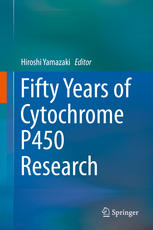

Most ebook files are in PDF format, so you can easily read them using various software such as Foxit Reader or directly on the Google Chrome browser.
Some ebook files are released by publishers in other formats such as .awz, .mobi, .epub, .fb2, etc. You may need to install specific software to read these formats on mobile/PC, such as Calibre.
Please read the tutorial at this link: https://ebookbell.com/faq
We offer FREE conversion to the popular formats you request; however, this may take some time. Therefore, right after payment, please email us, and we will try to provide the service as quickly as possible.
For some exceptional file formats or broken links (if any), please refrain from opening any disputes. Instead, email us first, and we will try to assist within a maximum of 6 hours.
EbookBell Team

5.0
80 reviewsThis book encompasses major progress and future directions in cytochrome P450 (P450) research. Included are contributions by pioneers in the discovery of P450, with chapters on the molecular and functional properties of P450 and cutting-edge applications knowledge from various fields. P450 research has its roots in metabolism, but the true beginning was in 1962 with the publication by Tsuneo Omura and Ryo Sato in The Journal of Biological Chemistry on their discovery of the cytochrome.Following this groundbreaking study, over the last half-century, research has revealed that many forms of P450 exist in animals, plants and microorganisms. P450 research has expanded into many different fields including medicine, agriculture and biotechnology and has drawn the attention of industries for its bioengineering applications, such as drug development and creation of the “blue rose”. Also, research on nuclear receptors, which has grown out of research on the regulatory mechanisms of P450 genes, has become an important area in biology, medical science, pharmacology and clinical medicine—for example, with recent developments in personalized medicines. This book will draw readers into the important and exciting world of P450 and will encourage young students and scientists in P450 research to continue expanding the field via new approaches.